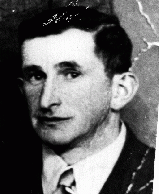You searched for: nazi germany
<< Previous | Displaying results 1121-1130 of 1276 for "nazi germany" | Next >>
-
Tonie Frederika Kaufmann Soep
ID CardTonie's parents came to the Netherlands from Germany in the 1880s, and their six children were born in Amsterdam. As a child, Tonie studied the piano, and she excelled in French. When she married Abraham Soep, a diamond manufacturer, Tonie adopted her husband's observant Jewish practices. Their three children were born in 1919, 1923, and 1924. 1933-39: Tonie's husband served for many years as the president of the Amsterdam Jewish community. The Soeps had a large and comfortable home. Tonie and Abraham…
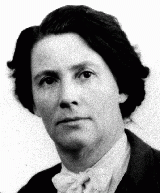
-
Rosa Israel Waldhorn
ID CardRosa was one of 14 children born to religious Jewish parents in the village of Yasinya at a time when it was known as Korosmezo and was part of Hungary. During World War I, she married Michael von Hoppen Waldhorn, an officer in the Austro-Hungarian army who was based near Yasinya. During the 1920s they moved to Paris, where they raised three children. 1933-39: The Waldhorn family's life in Paris was very different from their life in Hungary and Czechoslovakia. Rosa's husband made a good living, and he…
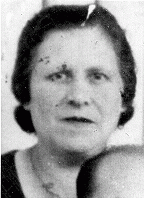
-
Zuzana Gruenberger
ID CardZuzana was the youngest of three children born to Hungarian-speaking Jewish parents in the city of Kosice. She was the baby of the family, and they called her Zuzi. Her father was a tailor whose workshop was in the Gruenbergers' apartment. 1933-39: In November 1938, when Zuzana was 5, Hungarian troops marched into Kosice and made it a part of Hungary. The Hungarians changed the name of the city to Kassa. The Hungarian government was friendly to Nazi Germany and introduced anti-Jewish laws in…
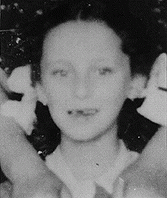
-
Ossi Stojka
ID CardOssi was the youngest of six children born to Roma ("Gypsies") who traveled in a family wagon. His family was Roman Catholic. Their caravan spent winters in Vienna, Austria's capital, and summers in the Austrian countryside. The Stojkas belonged to a tribe called the Lowara Roma, who made their living as itinerant horse traders. Ossi's ancestors had lived in Austria for more than 200 years. 1933-39: Ossi was 2 years old when Germany annexed Austria in March 1938. The Stojka family wagon was parked for the…

-
Bertha Wolffberg Gottschalk
ID CardBertha was born to Jewish parents in the capital of East Prussia. Her father served on the Koenigsberg city council. In 1887 Bertha married Hugo Gottschalk, and the couple settled in the small town of Schlawe in northern Germany. There, Hugo owned the town's grain mill. The Gottschalks raised their four children in a home near a small stream, ringed by orchards and a large garden. 1933-39: Bertha and her daughter Nanny have moved to Berlin--Hugo passed away in 1934 and they were afraid of the growing…
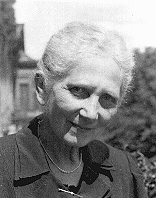
-
Frederick Dermer
ID CardFrederick was born to a Jewish family in the Austrian capital of Vienna. His father died when he was a baby, and he and his mother moved into an apartment with Frederick's widowed grandfather. As a young boy, Frederick attended a Viennese public school. 1933-39: Frederick was a rambunctious child. Once, when his grandfather was baby-sitting, Frederick used a silk lampshade as a "parachute," and jumped from the top of the wardrobe closet. That was the last time Frederick's grandfather would baby-sit.…

-
Jacob Gamper
ID CardJacob was born to a Jewish family in the Baltic seaport of Liepaja. He owned a clothing store in the city, and also owned some apartments, from which he collected rent. After his wife died, Jacob, who had retired, moved in with his daughter Sarah. 1933-39: Jacob was an avid reader. His favorite newspaper was Liepaja's German language daily, the Libauer Zeitung, which he liked to read in the garden and orchard around his daughter's home. On Sundays, "Grampa" would take his granddaughters Fanny and Jenny…
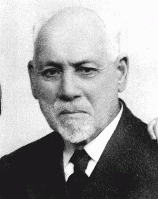
-
Poster depicting the Statue of Liberty and flags of Allied Nations
ArtifactPoster titled “The United Nations Fight For Freedom.” It was one of many posters produced by the Office of War Information, the United States’s official propaganda agency during World War II. Canadian-American commercial artist Steve Broder (1902-1992) designed this work to bolster confidence in the Allied war effort against the Axis Powers (Nazi Germany, Fascist Italy, and Imperial Japan). It depicts the 30 flags of countries that signed the Declaration by the United Nations and declared war on the…

-
Children's art: Drawing of people in a garden
ArtifactAlice Goldberger (1897-1986) was born in Berlin, Germany. Trained as a youth-work instructor, she ran a shelter for disadvantaged children and their families. When Hitler came to power, Alice, who was Jewish, had to give up her post. She immigrated to England in 1939. When war broke out, Alice was interned on the Isle of Man as an enemy alien. While there, she organized a children's facility.Hearing of Alice's work in the camp, psychoanalyst Anna Freud (daughter of Sigmund Freud) intervened to secure her…

-
Naftali Bernstein
ID CardNaftali was one of six children born to a Jewish family in the small Lithuanian village of Karchai. When he was a young boy, a tutor would come to Karchai to teach the Jewish children in the village. Naftali later began public school in Janova and after graduating he went to an agricultural school. In 1929 Naftali moved to Siauliai, where he worked grading beets in a sugar beet factory. 1933-39: In Siauliai, Naftali lived with his sister, Sara, and her family who ran a dairy store. Naftali was a religious…
